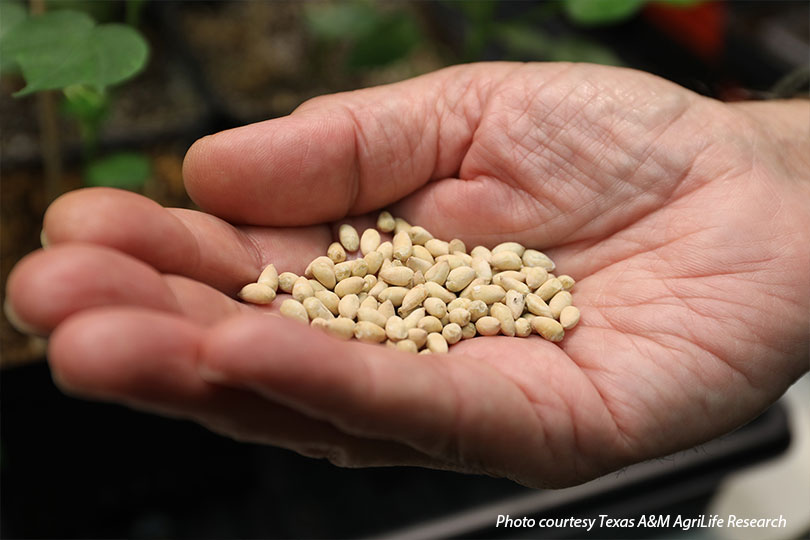A groundbreaking milestone has been reached in a decades-long effort to transform cottonseed into a viable global food ingredient.
Through a new agreement between the Texas A&M University System and Uzbekistan’s Center of Genomics and Bioinformatics, the ultra-low gossypol cottonseed trait is taking its first step toward commercial adoption.
This innovative development was led by Dr. Keerti Rathore, AgriLife Research plant biotechnologist in the Texas A&M Department of Soil and Crop Sciences.
The research project centers on removing gossypol, a naturally occurring toxin that makes cottonseed unsafe for most animal and human consumption.
Rathore has spent more than 30 years improving the value of cotton, going beyond the growers’ focus on the fiber and concentrating on the value-added use for the seed, which has a high protein and oil content.
While cotton produces more seed than fiber by weight, gossypol limits its value. Rathore’s innovation, TAM 66274, lowers gossypol to safe levels, opening the door to new uses in poultry, swine, aquaculture and even human food products.
The breakthrough was deregulated in the U.S. by the U.S. Department of Agriculture in 2018 and approved by the U.S. Food and Drug Administration in 2019. With foundational support from Cotton Incorporated, the technology has been made available for noncommercial use in recent years to demonstrate its humanitarian potential.
Uzbekistan is the first country to formalize a partnership and adopt the trait for use in its own cotton breeding programs.
This partnership was facilitated by Uzbekistan’s Center of Genomics and Bioinformatics of the Academy of Sciences. The agreement marks a significant opportunity for technology exchange, as future developments in Uzbek cotton genetics may also benefit U.S. growers.
Dr. Ibrokhim Abdurakhmonov, Texas A&M Department of Soil and Crop Sciences former student and current Uzbekistan Minister of Agriculture, facilitated this humanitarian relationship.
“The transfer of cutting-edge cotton innovation offers a significant opportunity for Uzbekistan’s cotton industry,” Abdurakhmonov said. “It is of interest to the research community, government and farmers, aligning fully with Uzbekistan’s food security agenda.”
Rathore said the Uzbekistan partner organization, the Center of Genomics and Bioinformatics, founded by Abdurakhmonov, is well-positioned to acquire this technology because of the researchers’ expertise in transferring and commercializing traits.
The long-term goal, according to Rathore, is global adoption. He envisions cotton being valued not only for its fiber but as an alternative protein source. Support for his work dates back to 2005, when Nobel Peace Laureate Dr. Norman Borlaug praised the innovation for its potential to improve global nutrition.
“This research potentially opens the door to utilizing safely the more than 40 million tons of cottonseed produced annually as a large, valuable protein source for improving nutrition of monogastric animals, including man,” Borlaug wrote.
The dual-purpose use of the crop would further the sustainability of cotton production.
“I hope this partnership and transfer of technology will be mutually beneficial and will help promote adoption of this technology in the U.S. and worldwide in cotton farming soon,” Rathore said.


Leave A Comment